- This is Part III in a Three Part Series -
This article originally published on our Home Page in February 2012

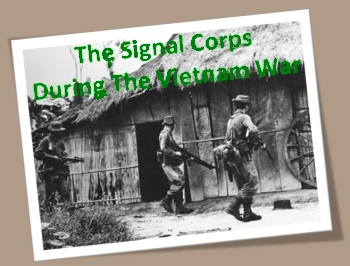
[Please Note: Any opinions
expressed in this article are those of the author
and do not necessarily represent the U.S. Army
Signal Corps OCS Association]
This article is the third in a series
regarding the Signal Corps and its path of evolution
from WWII through Korea to Vietnam. The first two,
The Signal Corps During
World War II, and
The Signal Corps During The Korean
War, can be found on our
Brief Histories page.
There is a quick link to them
at the bottom of this page.
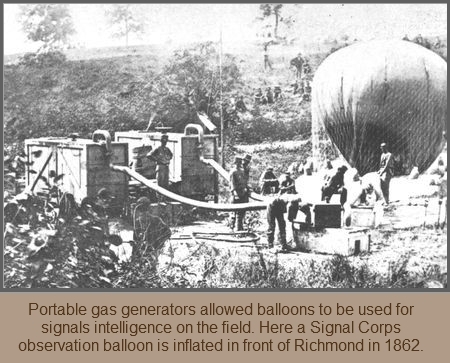 In each article we have tried
to take a 50,000 foot view of what the Signal Corps
did during these wars, and determine from such
observation how it affected the Corps’ evolution
from the simple mission it had when it first came to
prominence during the Civil War, to the complex
mission structure it holds today. If one looks back
on those early days and considers that at the time
of the Civil War the Signal Corps’ primary task was
simply to observe the enemy (usually from a hot air
balloon), report on its activities, and deliver
messages via pigeons or signal flags, one can see
that today its mission to do everything from manage
strategic DOA and DOD assets to being responsible for…
In each article we have tried
to take a 50,000 foot view of what the Signal Corps
did during these wars, and determine from such
observation how it affected the Corps’ evolution
from the simple mission it had when it first came to
prominence during the Civil War, to the complex
mission structure it holds today. If one looks back
on those early days and considers that at the time
of the Civil War the Signal Corps’ primary task was
simply to observe the enemy (usually from a hot air
balloon), report on its activities, and deliver
messages via pigeons or signal flags, one can see
that today its mission to do everything from manage
strategic DOA and DOD assets to being responsible for…
• Automation, communication, electronics and
network planning, design, engineering,
evaluation, management, installation, operation,
logistical support, and maintenance of signal
equipment and systems; to
• Advising
commanders, directors, and staff on command and
control signal requirements, capabilities, and
operations, including computer systems, data
management, signals intelligence, signals
monitoring, and network operation; to
• Developing requirements for the design and
implementation of local, regional and global
data, mobile, and fixed communications systems
and networks; as well as
• Establishing, preparing, coordinating and
directing programs, projects and activities
engaged in unit level supply, logistics,
maintenance, and life-cycle management of
worldwide signal materiel; to
• Integrating tactical, strategic and
sustaining base communication, information
processing, and management systems into a
seamless global information network able to
support knowledge dominance for the Army as well
as joint and coalition operations; to
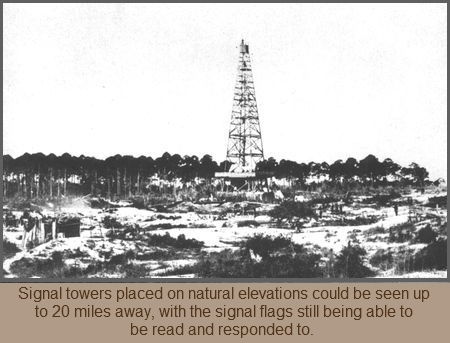 •
Directing and controlling of the units and
activities involved with the application of
electrical, electronics, and systems engineering
and management principles in the design, test
acceptance, installation, operation, and
maintenance of signal systems, equipment,
databases, networks, and facilities; to more
esoteric activities such as
•
Directing and controlling of the units and
activities involved with the application of
electrical, electronics, and systems engineering
and management principles in the design, test
acceptance, installation, operation, and
maintenance of signal systems, equipment,
databases, networks, and facilities; to more
esoteric activities such as
• Operating photo and video service
undertakings that run the gamut from documenting
combat activities to archiving the same,
performing radio, data and other signal
intelligence functions, to
• Developing and implementing radio and
radar countermeasures, establishing airway
communications systems; and of course
• Participating in all manner of combat
activities from support of joint-assault signal
operations through to the most simple but
critical defense of individual signal sites…
we can see that much has changed
in the Signal Corps.
The question we have been trying
to answer through these three articles has been how
did these changes come about and why. The answer we
found is that the real time pressures of war,
followed (in most cases) by government mismanagement
of military budgets between wars, caused these
changes.
In
great part, the bulk of the changes in the Signal
Corps’s approach to its duties came about during
WWII, Korea and Vietnam... and the times between
them. It’s because of this that our focus over the
past two articles has been on the Signal Corps
during the first two of these wars. In this article
we finish our series by looking at how the Vietnam
War forced further change upon the Signal Corps.
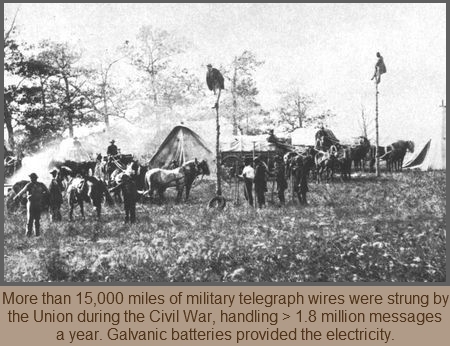 Looking back over the prior two pieces, we can see
that one of the key lessons we learned in looking at
the Signal Corps during WWII and Korea is that
unlike most branches of service where the task is
singular, comprising little more than one of giving
combat in a manner that contributes to winning a
war, the Signal Corps has evolved during these
periods to fulfill two
roles. In military speak, it could be said that
while other branches of service focus narrowly and
almost exclusively on their task at the operational
level of war, the Signal Corps found that in order
to meet its ever evolving mission, it needed to
expand its operational concept to take in not only
the application of military art and science to areas
within the operational level of war, but also
external to it.
Looking back over the prior two pieces, we can see
that one of the key lessons we learned in looking at
the Signal Corps during WWII and Korea is that
unlike most branches of service where the task is
singular, comprising little more than one of giving
combat in a manner that contributes to winning a
war, the Signal Corps has evolved during these
periods to fulfill two
roles. In military speak, it could be said that
while other branches of service focus narrowly and
almost exclusively on their task at the operational
level of war, the Signal Corps found that in order
to meet its ever evolving mission, it needed to
expand its operational concept to take in not only
the application of military art and science to areas
within the operational level of war, but also
external to it.
In this
regard, the first role the Signal Corps carries out
obviously relates to being a partner war fighter,
along with all of the other branches of the U.S.
military. Considering that over the past 60 years
the Signal Corps has been first a part of the combat
arms, then not, and then later included again, being
a partner war fighter has not always been easy.
Whether formally a partner war fighter or not, in
this role the Signal Corps, like its sister
branches, puts its men on the line—engaging the
enemy where and when needed, as it goes about its
task of providing any and all support required to
deliver the communication capabilities essential to
the other branches sharing the combat field with it.
The second, as the reader can
intuit from the list above, relates to providing the
kind, type, and quantity of communication and signal
capabilities necessitated by the nature and
characteristics of the war, situation, or conflict
underway. And while the glory in what the Signal
Corps does may rest within the former role of a war
fighter, it is the work done within this latter
category that earns the Signal Corps its stripes.
Two simultaneous missions: that of a war
fighter, and that of the provider of any and all manner of
communication—or as we know it today, Information Technology
(IT), Information and Communication Technology (ICT),
Information Systems (IS), Information Management (IM),
Knowledge Management (KM), Technical Science Management and
Application (TSMA), and Data Management (DM)—as may
be required by the nature and characteristics of the
conflict in question.
Without these two tasks being successfully
performed by the Signal Corps, combatants from the other
branches would find themselves existing and fighting within
a vacuum... a vacuum void of information about the enemy,
his position, intentions, status, and pattern of
methodological behavior.
For if the truth be told, these latter five elements form
the determinants of war in the modern age, and it is the
Signal Corps that is first and foremost responsible for
assisting in their identification, documentation, and
communication to the rest of the military.
One can see then that as both the foundation
and the glue that makes possible an effective response to
the numerous war activities the U.S. military gets involved
in, by enumerating to its sister branches an enemy’s
position, intention, status, and pattern of methodological
behavior, the Signal Corps is the enabler that allows the
sister services to act with both precision and objective
intent. In other words, because of the information
communicated by the Signal Corps, its
sister services, such as the Infantry, are able to use this
knowledge to their collective advantage. In today’s modern
world, it would be said that the Signal Corps enables the
Infantry to turn its troops into
knowledge workers.[1]
And yet while this seems self obvious to us today, the
reader should recognize that the calling to serve this
purpose is not only a far cry from the job the Signal Corps
originally set out to do when it was founded, it is as
equally far a cry from that which it did during the second
world war and Korea. The Signal Corps has evolved. As
pundits would say today, it’s not your father’s Signal Corps
anymore.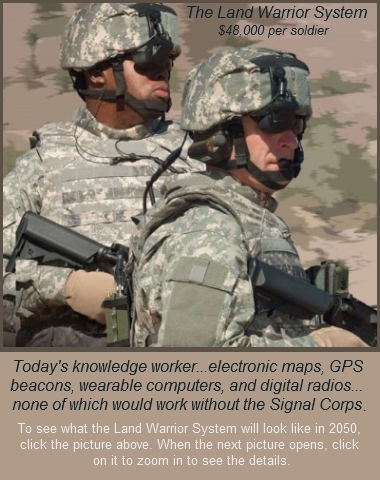
As we saw in the previous two articles, WWII
challenged the Signal Corps to develop several capabilities
that it did not previously have, while the Korean War helped
the Signal Corps to figure out how to better deliver these
capabilities. One of the more important of these
capabilities involved expanding the role of the Signal Corps
to support a method of war-fighting originally developed by
Gen. Ulysses S. Grant, but not fully applied since then
until WWII. A basic tenet of how America fights wars even
today, Grant’s doctrine revolved around the emphasized,
overwhelming, and continued application of military force
directly
against the enemy army, as well as indirectly
against the enemy's civilian population (read: the
civilian-industrial sector), to prevent the civilian sector
from acquiring the resources (including the availability of
civilian manpower itself) needed to support the military.
With no insult meant, Colin Powell’s famous Powell Doctrine
of the application of overwhelming force in time of war is
simply a restatement of Grant’s original war strategy, and a
not very original one at that.[2]
In applying force against an enemy’s
Army, clearly, a key part of this is knowing where the enemy
is and what his intentions are. In depriving the military
and its supporting civilian population of their ability to
provide resources to the enemy, the important part is
identifying both what resources the military needs, as well
as who is providing them to the military.
In both of these instances, a quick
reflection will show that it is the Signal Corps that has,
time and again, stepped forward to help solve the riddle of
how to identify the who, what, where, when, and why embedded
in matters of war, and communicate this information to the
troops in the field. In the first instance, the Signal
Corps’ development of RADAR serves to make this point.
Whether it was the kind of RADAR that first detected Japanese
Zeros approaching Hawaii on December 7, 1941, or the kind of
X Band RADAR that was first used to locate mortars, the
objective was the same: identify the enemy’s intentions,
locate them, and distribute this information to those in the
field.
In the second case it was the Signal
Corps’ development of signals intelligence that led the way
towards identifying the tie in between military resources
and the civilian counterparts that provided them. Signals
Intelligence, combined with the Signal Corps’ development of
encrypted as well as burst radio communication, allowed U.S.
saboteurs to step in and deny these resources to the enemy’s
military.
World War II then served as a crucible in helping mold from
the tailings of the old-school military of World War I a
modern Signal Corps able to apply newer and rapidly evolving
forms of technology to the purpose at hand. What it failed
to do however was help the Signal Corps develop an
organizational structure able to anticipate and respond to
the sort of quickly changing battlefield conditions that
were looming (as WWII was brought to a close) just over the
horizon.
Korea did that.
As we saw in the last article, the
Korean War brought home to roost the necessity for the
Signal Corps to wrench itself from its stayed approach to
handling operational situations, instead creating a means to
transform itself on the fly… applying in each and every case
that it was presented with the kind of American leadership,
creativity, and problem solving skills that are required if
one is to succeed in a fluid situation. As the Signal Corps
learned then, key to doing this was being able to
distinguish where rapid transformational abilities were
needed and should be allowed, versus those situations where
transformational pressures should be resisted and things
forced to continue to be done “by the book.”
Remarkably, the Signal Corps succeeded
in this vetting conundrum. It succeeded by unknowingly
becoming the first military institution to define and apply
process management to its mission. A term that came into
vogue only in the early 1980s, the Signal Corps during the
Korean War was one of the first to define this approach to
task management, becoming its own internal proponent of the
use of what is today known by the terms TQM, Six Sigma, QMS,
process management, and a dozen others. With focus and
purpose but unmindful that it was charting new territory,
the Signal Corps wrote process management dictums into its
SOPs even as the Korean War unfolded.
As to why
this was necessary, battlefield conditions of the Korean War
presented the Signal Corps with the need to integrate
in real time
its ability to find, trap and analyze exocentric knowledge
of the enemy's intentions and activities... from all
available sources and services... in order to build ever
quicker, faster, cheaper, better endocentric means of
analyzing and sharing this information with the combat arms
most in need of it.
Process management, when used as
a means of solving real time war problems, is ideal for this
purpose as it helps strain out nonstandard data points in
the collection and analysis effort. For the Signal Corps
then, the Korean War proved to be another important period
of transition, in both how it selected, trained, organized,
and managed its personnel, as well as how it managed itself
in performing its core tasks of analyzing and communicating.
In all of this, developing multiple technological means to
address each communication need that appeared inadvertently
led to what was likely the first ever effective application
of process management techniques in a hot war environment.
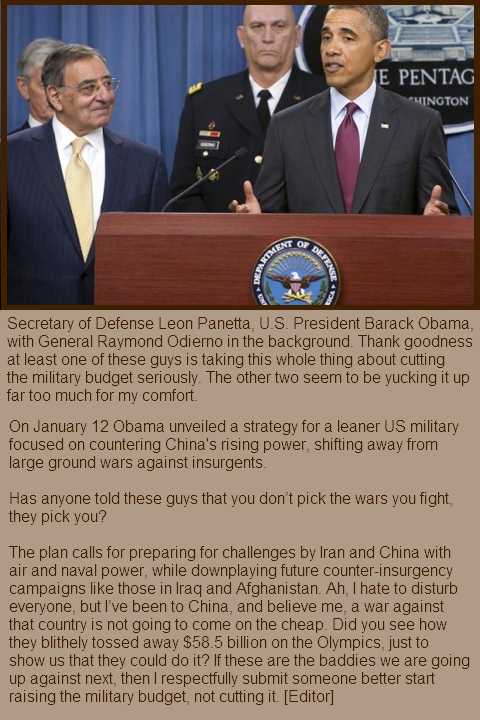 By the end of the Korean War the Signal
Corps had found itself in a new place in military society.
By 1960 the Signal Corps was the Army's third largest
branch, comprising about seven percent of its strength. In
1961 the Army redesignated the Signal Corps as a combat
arm again, a privilege it lost at the end of the second world war,
while at the same time keeping its designation as a
technical service arm.
By the end of the Korean War the Signal
Corps had found itself in a new place in military society.
By 1960 the Signal Corps was the Army's third largest
branch, comprising about seven percent of its strength. In
1961 the Army redesignated the Signal Corps as a combat
arm again, a privilege it lost at the end of the second world war,
while at the same time keeping its designation as a
technical service arm.
Unfortunately, as with the end of WWII and every war that
preceded it, with the suspension of combat operations in
Korea America’s federal government set about the task of
looting the military one more time, in a mad rush to reorganize it,
ostensibly to “learn from the lessons of Korea.” Why the
U.S. government continues with this charade of cutting
military expenditures once a war has ended (under the
pretense of making the military more efficient or
effective), one can only imagine. Yet, like clockwork, as
soon as a war has ended, government leaders set about
wielding their ax to the military… as though the U.S. will
never again fight another war.
One can see it happening today. With President Obama
announcing in January 2012 his plans to reorganize the
post-Iraq, post-Afghanistan U.S. military, his efforts are
at best feckless and at worst one of the most irresponsible
things a president can do. Cutting the size of the military
under the guise of making it more suitable to large scale
naval engagements between nuclear powers,
during a time of increasing tension between the U.S. and any
number of countries, is in total contravention of the
very reason for a people to have a government in the first
place.[3]
In this Editor's view, Obama’s actions
today are no less imprudent and irresponsible than those of
the leaders who, after World War II, gutted America’s
military to the point that it was unable to fight in Korea
without mounting a draft and scavenging the whole of Japan
for every piece of armament that could be found.
Decorated with disingenuous statements about how his new
changes will make the U.S. Army better structured to fight
the future wars that Leon
Panetta says are coming, President Obama should
learn from what happened in Iraq when Rumsfeld’s lofty goal
of developing a new, more nimble, smaller footprint military
had to be shelved because… gosh, what a surprise… wars
require overwhelming force to win.[4]
This digressive rant aside, the military at the
conclusion of the Korean War, the Signal Corps included, was gutted one more
time, in another round of post-combat capability reductions… of a type that
had an impact on the upcoming war in
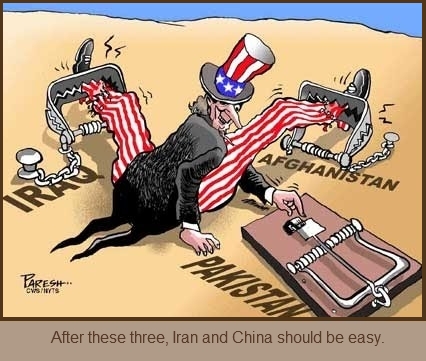 Vietnam. Fortunately, unlike when the
U.S. military’s global communication network ACAN (Army Command and
Administration Network) was rent asunder between the end of WWII and the
beginning of the Korean War, post-Korea the newly named and established
Defense Communications Agency decided to maintain the global communications
network then in place, and even expand this worldwide, long-haul system to
provide still greater, secure communications. Thus, for the first time in
the nation’s history the president, the secretary of defense, the Joint
Chiefs of Staff, government agencies, and the military services, not to
mention America’s diplomats abroad, had access to a fully integrated,
secure, global communication network at the time the Vietnam War got
underway.
Vietnam. Fortunately, unlike when the
U.S. military’s global communication network ACAN (Army Command and
Administration Network) was rent asunder between the end of WWII and the
beginning of the Korean War, post-Korea the newly named and established
Defense Communications Agency decided to maintain the global communications
network then in place, and even expand this worldwide, long-haul system to
provide still greater, secure communications. Thus, for the first time in
the nation’s history the president, the secretary of defense, the Joint
Chiefs of Staff, government agencies, and the military services, not to
mention America’s diplomats abroad, had access to a fully integrated,
secure, global communication network at the time the Vietnam War got
underway.
As to how this network got built, under orders from the
DCA the Signal Corps set about integrating what was left of the former ACAN
system with the new network elements put up during the Korean War, and any
other odd long haul network pieces that could be found laying around,
bringing them all together into an expanded global network. As a new network
it was titled the Strategic Army Communications Network (STARCOM). Yet while
this effort proceeded smoothly and the network came on line as required, a
new wrinkle in how the Signal Corps did its job was sneaking slowly into the
process… a wrinkle that would have a profound effect in a few years when the
Vietnam War got underway… and an even more profound effect by the time this
precedent percolated its way down to the War in Iraq.
What was that wrinkle? The answer was that it was
the partial contracting of the task of building STARCOM to America’s
industrial sector: the defense industry. While at the time and on the
surface this new approach of contracting military work to civilian companies
seemed risk averse and a smart way of getting around the effects of the
downsizing of the military at the end of the Korean War, behind the scenes
and underneath it all a dangerous precedent was being set that would live
with the Signal Corps forever. Worse, this new precedent and approach would
inexorably expand and extend itself across all of the branches of the
military, down to today.
 Thus today, not only are many of the Signal Corps’
communication systems designed by civilian contractors, they are built and
run by them too. Similarly, and perhaps with far greater consequence when
it comes to protecting civilians, NGOs, and U.S. government agency members
in war zones, the Infantry itself has been co-opted into this program,
finding many of its traditional roles in combat zones supplanted by firms
like Blackwater, Greystone, and the other shadow armies that operate within
what is now known as the Privatized Military Industry. It boggles the mind:
America’s Army fighting side by side with shadow armies hired by the
government so that the size of the military can be kept small.
Thus today, not only are many of the Signal Corps’
communication systems designed by civilian contractors, they are built and
run by them too. Similarly, and perhaps with far greater consequence when
it comes to protecting civilians, NGOs, and U.S. government agency members
in war zones, the Infantry itself has been co-opted into this program,
finding many of its traditional roles in combat zones supplanted by firms
like Blackwater, Greystone, and the other shadow armies that operate within
what is now known as the Privatized Military Industry. It boggles the mind:
America’s Army fighting side by side with shadow armies hired by the
government so that the size of the military can be kept small.
Beginning with the government’s decision to
downsize the U.S. military after the Korean War, a cruel joke was played on
both the military and America’s citizens. Under the rubric of saving money,
downsizing, and realigning the Army to fight smaller more mobile wars (a
claim, as we stated above, that is still raised today whenever Congress or
the president sets about cutting the military’s budget), in the late 1950s
to early 1960s the government set about transferring much of the Signal
Corps’ role to civilian industry players.
Thank you Dwight David Eisenhower. Your fear of
the military–industrial complex was heard well. Unfortunately, the solution
to the problem you and the presidents who followed you put in place only
served to turn it from being a problem of budget matters being driven by the
military–industrial complex into one of budget matters being driven by the industrial–military
complex. The same bedfellows, they just swapped places in bed.[5]
For the Signal Corps, this new partnership with
industry proved a double edged sword. On the one hand, because of the long
standing relationships that existed between the Army’s research facilities
at Ft. Monmouth and civilian industry, the Signal Corps had a cordial,
synergistic working relationship with the civilian guys, one of the benefits
of which was nearly immediate access for development purposes to the very
latest in cutting edge technology and products. On the other, the inroads
civilian industry made into the actual running of Signal Corps facilities
put an enormous strain on the type, quality and amount of manpower available
to the Signal Corps itself. After all, if civilians could do the work, what
was the purpose of recruiting soldiers and Officers into the Signal Corps?
What was the purpose of having training schools to turn out troops qualified
to hold the numerous MOSs (reduced to just 17 as of today) that had been defined? Of what
need were Officers if the complement of enlisted men was being downsized?
Strangely, no one seemed to stop and think of how this would all play out if
more armed hostilities broke out. Would the civilians who were running
Signal Corps facilities be expected to ship out and take up residence in a
war zone if war broke out, to build, run and maintain the Signal Corps
facilities needed there? Nah, surely not.
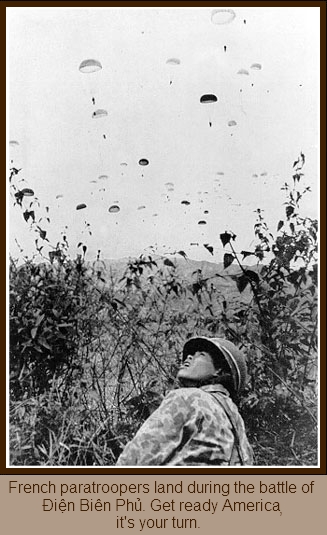 Meanwhile, while the Signal
Corps was evolving once again… this time learning to embrace a new working
relationship with civilian contractors who were snaking their way ever
deeper into the Signal Corps’ operations and management structure... on the
other side of the world life in South East Asia was beginning to go belly
up. As we all know today, the French suffered a humiliating defeat at
Điện Biên Phủ, after which they
promptly withdrew from Indochina and left the U.S. to deal with the mess
they created.
Meanwhile, while the Signal
Corps was evolving once again… this time learning to embrace a new working
relationship with civilian contractors who were snaking their way ever
deeper into the Signal Corps’ operations and management structure... on the
other side of the world life in South East Asia was beginning to go belly
up. As we all know today, the French suffered a humiliating defeat at
Điện Biên Phủ, after which they
promptly withdrew from Indochina and left the U.S. to deal with the mess
they created.
The U.S., seemingly ever solicitous of the French,
decided to keep the "advisory group" (already in Vietnam) in place when the
French left, allegedly to help guide the South Vietnamese Army now that the
French were no longer available to do the job. In this act the Signal Corps
clearly enmeshed itself in the evolving drama; not just taking a role in a
side show foreign engagement, but inadvertently helping to move the show
over the next few years from the wings of the theater to center stage. The reason the
Signal Corps found itself going along for the ride, with one hand on the
steering wheel, was simple: the Vietnamese Army contained a Signal Corps,
and therein existed a ready-made excuse for the U.S. government to maintain
listening posts in Vietnam as well as send more advisors along.[6]
In the end then, at the onset of the Vietnam War
the Signal corps found itself ostensibly teaching operational and logistical
signal matters to the Vietnamese Signal Corps, while in reality it was using
its presence in-country to listen in on regional communications. As modern
day historians, what matters to us is not what the Signal Corps was doing,
but recognition of the fact that the U.S. Signal Corps was one of the first
elements, if not the very first of the U.S. military, to take up an
active role in the Vietnam War. In particular, in a series of steps between
1954 and 1965 the Signal Corps brought in more and more advisers, to the
extent that they were assigned even down to the divisional level and to each
of the Vietnamese Army's military regions.
By 1963 (at the time of Kennedy’s assassination)
the U.S. had more than 16,000 U.S. military advisors in South Vietnam, the
bulk of which were either assigned to or an intrinsic part of the Signal
Corps. Yet among all of them there were no staff level Signal Officers.
Instead, country oversight was handled by the Signal staff at the Pacific
Command in Hawaii. Interestingly, despite this management from afar approach, things
got done. One of those things included a very serious effort on the part of
in-country Signal Corps staff to send their South Vietnamese counterparts to
signals training at Forts Monmouth. Taking a leaf out of the Signal Corps’
training book, a similar effort was undertaken in 1961 when the U.S. sent
400 Special Operations Forces (Green Beret) to South Vietnam to begin
training local ARVN troops in how to conduct what was, for the first time,
called a counterinsurgency war against the Communist guerrillas in
South Vietnam. Historians should mark this point as the time from which the
term counterinsurgency entered the American lexicon. Today one could almost
say that Afghanistan, or perhaps Pakistan, is a synonym for
counterinsurgency.
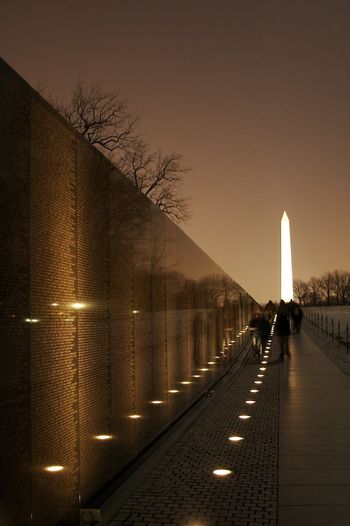 Looking back now on how the Vietnam War got
started, and the role the Signal Corps played, it seems strange to admit
that the war itself had no beginning. Is that possible? Can America really
get itself into a war that cost it 58,272 KIA, 303,644 WIA, 1,687 MIA, and
866 POWs, but for which Congress and repeated presidents didn’t have the
time or consideration for its military to sit down and declare war on the
enemy? No formal beginning. No formal end. Is that really possible?
One almost begs to ask: what has our country come to when our elected
leaders spend so much effort dissembling the truth about the foreign policy
they are setting... so that it is palatable to the country at large... that
they don’t have the time to declare as a war an undertaking that America's
youth die in by the bucketful?
Looking back now on how the Vietnam War got
started, and the role the Signal Corps played, it seems strange to admit
that the war itself had no beginning. Is that possible? Can America really
get itself into a war that cost it 58,272 KIA, 303,644 WIA, 1,687 MIA, and
866 POWs, but for which Congress and repeated presidents didn’t have the
time or consideration for its military to sit down and declare war on the
enemy? No formal beginning. No formal end. Is that really possible?
One almost begs to ask: what has our country come to when our elected
leaders spend so much effort dissembling the truth about the foreign policy
they are setting... so that it is palatable to the country at large... that
they don’t have the time to declare as a war an undertaking that America's
youth die in by the bucketful?
Back in those early days, for those on the ground
in Vietnam, with or without a formal beginning, things moved inexorably
towards a hot war. Incrementally, in a series of steps between 1950 and
1965, America found itself engaging in combat with the North Vietnamese.
- - -
One would have thought that this slow march to war
would have given the U.S. military plenty of time to prepare. But that
wasn’t the case, although not through the military’s fault alone. To prepare
for war requires three key things: knowledge that it will happen, plans as
to how the war should be prosecuted, and the money to secure the resources
to prosecute the war as planned. Without a formal declaration of war from
Congress, the funds needed to expand the military to undertake and win this
oncoming war simply did not exist. For the Signal Corps, this meant that as
the French left the country and took along the American supplied signal
equipment that had been given to them, there were no longer any systems in
place with which to tie the country together… nor any money to acquire what
was needed. So again, as in the run up to the Korean war, the Signal Corps
found itself cannibalizing signal facilities around the world in an effort
to build a communication network that could support armed conflict. And
since Japan had already been stripped to support Korea, that left only
Europe as a warehouse from which to pilfer signal equipment to build what
was needed in South Vietnam.
For the South Vietnamese government in power, the
precarious situation it was in only became more obvious—even if it could
rein in the crony capitalism, elitism, and corruption that was endemic in
the country, without a telecom and radio infrastructure with which to reach
the populace, it was going to prove near impossible to rally the South
Vietnamese people to a cause of war with the north. The fact was, the
commercial communication networks built by the French lay in disrepair and
ruin after years of inattentiveness, and the South Vietnamese military,
having no communication network of its own to underwrite its own war
effort, was certainly in no position to help the civilian government tie
the country together. No civilian communication infrastructure, no military
communication network to back it up, no military communication network to
use for its own, and no training in the form of combined arms tactics
required to make effective use of a battlefield network in real time combat, all meant that South Vietnam found itself in a real mess as armed
conflict escalated in the early 60s.
The reader can understand then that with this
scenario presenting itself it was only natural that the “wrinkle” discussed
earlier would raise its ugly head again—this time as the only viable
solution to the problem at hand.
And thus it happened; to make available and stand
up an operational communication system to serve the civilian, military, and
government needs of South Vietnam, the Signal Corps turned to and hired
contractors to construct a regional in-country network. In simple English,
the military downsizing that Congress and the president
mandated on the U.S. Army at the end of the Korean War forced the Signal
Corps to enter this new war with civilian contractors doing the better part
of its job for them. And in short order this first step was followed with a
similar outsourcing of the Signal Corp’s mission to contractors that
designed, built, and in many cases operated parallel networks in Cambodia,
Laos, and Thailand.
The first of these efforts occurred in May 1960,
when Page Communications undertook to build what was called the Pacific
Scatter System,[7] a telecom and data network
designed to serve the Army by linking the Philippines with Hawaii. Following
a course of 7,800 miles, it leapt along a chain of islands and countries
stretching from the Philippines to Guam, Midway, and on to Hawaii. Linking
South Vietnam to the Philippines was accomplished via a portion of the
military’s Strategic Army Communications (STARCOM) network, which was
terminated at Phu Lam (Phu Lam translates as Rich Forest), outside of
Tan Son Nhut. To complete the track, Hawaii was linked to the U.S. at Davis,
California, via circuits that were originally part of the old ACAN network…
yet another ironic example of how a once important piece of the U.S.’s
global communication network was taken out of service because Washington
dictated that the military be cut back at the end of one war, only to find a
few years later that the systems taken down had to be hastily rebuilt to
serve again when the next war popped up.[8]
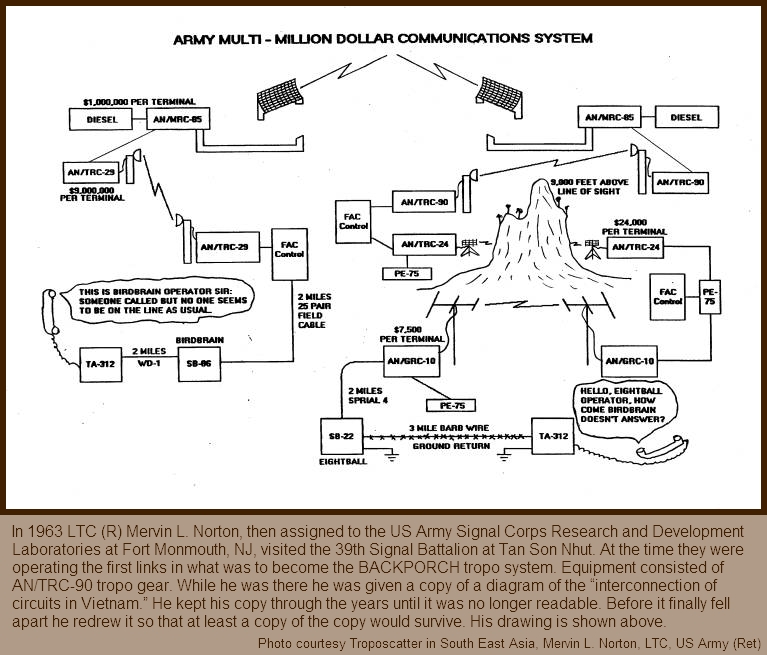
- - -
With the Pacific Scatter System in place, in 1962
Page Communications was awarded another contract (by the Secretary of the
Air Force), this time to install a network called BACKPORCH. BACKPORCH was
eventually to be a 72 channel, AN/MRC-85 Tropospheric Scatter system, with terminal
sites at Da Nang, Nha Trang, Phu Lam, Pleiku, Qui Nhon, and Ubon, Thailand.
In its early days however it started out with AN/TRC-90 tropo euipment.
Why did the Air Force contract for the system instead of the Signal Corps?
Again, the primary reason was that the Signal Corps' budget had been cut back so much
that it didn't have the funds
to build the networks needed
to handle combat operations on the ground. Instead, equipment had to be
scavenged from other places and other services.
Cost wise, for the Air Force, it was a good decision, as the
BACKPORCH contract was for only $12 million and that included Page
operating and maintaining the system for a year. For those Signal Officers
who served in Vietnam but may not remember BACKPORCH, while you may not
remember it well, you surely saw it, as BACKPORCH was the beast that caused
all of those huge 60 foot “billboard” antennas to be placed all over the
cities listed above, the mountain tops around them, and the rest of the
country too. Perhaps the most important part of Vietnam’s overall
battlefield, combat, area, and base camp communication net, BACKPORCH made
it possible for standard Army short range multichannel radios to be
connected literally from any active field combat area into the entire
country wide network, covering all of the I, II, III and IV Corps Tactical
Areas.
Unfortunately, while all of this was going on the
Philippines-to-Vietnam portion of the STARCOM network set up by Page was
proving to be a problem. STARCOM's radio circuits suffered from constantly
fading signals, proving unreliable in the steamy, stifling environment of
South Vietnam’s tropics. Needing something more dependable, the Signal Corps
requested approval to supplement STARCOM with an underwater military cable.
In 1962 the Joint Chiefs finally approved this request, with the
construction of the new WETWASH cable system… again contracted to Page
Communications, since the DOD had long since stripped the Signal Corps of
its cable laying ships... being started shortly thereafter.
WETWASH linked South Vietnam to Clark Airbase, at Luzon,
in the Philippines. However, as it would take time to complete WETWASH, an
alternative 60 channel tropo scatter bridging link was requested by the
Signal Corps, to try and connect South Vietnam to the rest of the world via
still another route. This bridging link was designed and built by Philco,
and linked Vietnam at Phu Lam to Bang Ping (near Bangkok), Thailand. At the
Thailand end it was integrated with additional radio links to take it from
Bang Ping to both Pakistan and Okinawa, and then on to the rest of the
world.
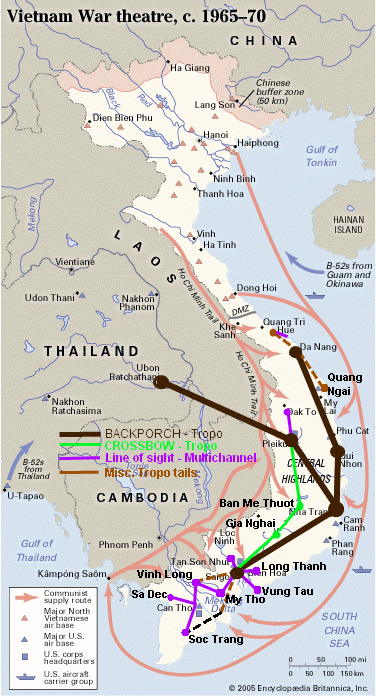
Sadly, the Philco tropospheric scatter bridge proved to
be as unreliable as Page’s STARCOM link, to the point that the Signal Corps
finally decided to take things into its own hands by replacing Philco’s work
with a new link designed and installed by the 1st Signal Brigade, instead of
yet another outside contractor. This link reconfigured the Philco approach
by relocating the Bangkok terminal to Green Hill in Thailand, and the Saigon
terminal to Vung Tau Hill. Not too strangely, it worked, perhaps because it was designed by junior level Signal Corps Officers with far less
training and far less compensation than the well paid engineers at Page. Either way, when the Signal Corps took matters into its
own hands, the work got done, and what was done worked. From these new
locations the circuits were then brought into both Bangkok and Saigon via
microwave links.[9]
In the end, while it took time for the lesson to be
learned, the U.S. military got the message that while outsourcing to
civilian contractors might be expeditious, if you wanted to get the job done
to the point that the communication links actually worked under rigorous
combat and environmental conditions, what the Signal Corps had to do was do
it itself. Unfortunately, and here again we are beating a dead horse, while
the Signal Corps seemed to have learned this lesson, Congress and the
president seemed not to, as shortly after the Vietnam War was over, budgets
cuts again tore into the Signal Corps’ ability to maintain and man the
global network it had so rigorously built.
By 1965 all of the kinks had been worked out of the
Vietnam-war-zone-to-the-rest-of-the-world communication system, with the
troops in the field finally being able to depend on multichannel radio relay
equipment to complete what were in fact intricate interconnections, tying
together all manner of VHF, UHF, microwave, tropospheric, ionospheric,
satellite, and undersea cables. Unlike in previous wars, the network put in
place allowed combat commanders on the ground to have instant access from
the field through standard field radios to anyone they might wish to talk
to, from FACs in the field, to Arty at fire support bases, to Westmoreland’s
HQ, any pilot sitting on any aircraft carrier in the entire Navy, all the
way up to the president himself. With an effective combat communication
network now in place, unit mobility greatly improved, allowing commanders to
finally let loose with their Hueys, using them to full advantage in taking
the fight to the Viet Cong and NVA. Perhaps best of all, having moved far
beyond the days of field commanders having to depend on strung wire to
communicate with, commanders could now move and shoot at any time they
wanted, without losing communications for a minute, even while they were en
route to their new positions.
Interestingly, a key part of the mobile capabilities the
Signal Corps delivered came about not because of the fancy long haul links
running over the tropo and other networks set up by the outside contractors,
but by a simple airborne FM relay system set up by Signal people in units
such as the 13th Signal Battalion. For example, in trying to meet
the needs of the 1st Cavalry Division, their client, the Signal guys in the
13th Signal Battalion came up with the idea of mounting radios in fixed-wing
aircraft and then circling those aircraft at 10,000 feet over the 1st Cav’s
daily battle area. By doing this the 13th was able to set up a method for
retransmitting messages between widely dispersed combat units on the ground.
Through this simple expediency the LOS limits and electro-magnetic
absorption effects of the triple canopy jungles on PRC-25s could
be overcome, effectively extending the PRC-25’s range from around 5 miles to
over 60. When the word got out as to what the 13th Signal Battalion had
done, Signal units throughout Vietnam found themselves beseeched with
similar requests by battalion and brigade commanders to help them set up
their own helicopter borne command centers, equipped with radio consoles and
no-nonsense solutions that would make a ham operator cry with envy.
Overall then, as 1965 unfolded commanders found that the number of problems affecting the Signal
Corps’ ability to stand up a solid communication network had been
dramatically reduced, if not completely overcome. Sure, there were still problems with not enough
circuits, but this was more a matter of a lack of available resources
stemming from the downsizing the Signal Corps took after the Korean War
than it was due to technical problems. Overall, traffic was flowing
smoothly, albeit a backlog was beginning to develop.
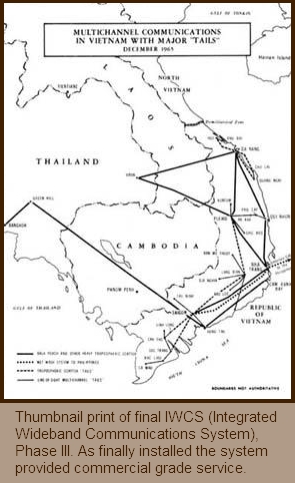 To make sure the backlog did not get out of hand, plans
were made to design and build a base theater network. The network would
involve a wide array of routing and transmission methods that would
reinforce the simple approaches used in cases like the retransmitting
aircraft mentioned above, with a more modern and well integrated battlefield
communication network. Known as the Integrated Wideband Communications
System (IWCS), the design was to blend automatic telephone, teletype, and
data systems with coastal undersea cables, and integrate all of these with
the BACKPORCH and WETWASH systems. The IWCS, designed to serve the Vietnam
battle space as its first priority, would then be integrated into the global
Defense Communication System.
To make sure the backlog did not get out of hand, plans
were made to design and build a base theater network. The network would
involve a wide array of routing and transmission methods that would
reinforce the simple approaches used in cases like the retransmitting
aircraft mentioned above, with a more modern and well integrated battlefield
communication network. Known as the Integrated Wideband Communications
System (IWCS), the design was to blend automatic telephone, teletype, and
data systems with coastal undersea cables, and integrate all of these with
the BACKPORCH and WETWASH systems. The IWCS, designed to serve the Vietnam
battle space as its first priority, would then be integrated into the global
Defense Communication System.
With IWCS in place, things for the Signal Corps became
much less dramatic as the war moved forward. By the time of Tet, everyone
knew their place, signal links were humming, and work progressed almost
without concern as Signal Corps troops went about their daily jobs. Even Tet
turned out to be merely a speed bump to the Signal Corps’ daily activities,
for while 10 of the IWCS signal sites were hit during Tet the damage they suffered
barely affected the “up time” of the network.
Yes, problems with personnel did exist… such as a
shortage of trained operators to run tropospheric scatter terminals.
However, in most cases solutions could be found. Of interest again is that
even in these cases where problems did exist—one more time everyone—they
existed because of the downsizing of the Signal Corps at the end of the
Korean War.
For example, while it was understandable that signal
schools could not produce qualified graduates fast enough, what wasn’t
understandable was why the Signal Corps could not reassign already qualified
personnel sprinkled around the world, from where they were to where they
were needed in Vietnam. The reason was that during the post-Korean War cuts,
the section of the Signal Corps that tracked personnel assignments in relation
to their MOS qualifications had been cut. Thus, since the records of
previously trained personnel no longer existed in a format where they could be
cross linked to current assignments, it was impossible to either recall
those people who had left the military to active duty, or find and reassign
them if they were still on active duty.
Adding to this difficulty, regulations at the time
prohibited the involuntary reassignment of military personnel overseas for
two years. And while this was eventually reduced to 9 months for specific
skills, the only viable solution to the problem was to make it worthwhile
for an enlisted man to “re-up” when his tour of duty was over. Thus, many a
Signal Corps EM found himself with a little extra cash in his pocket as the
DOD offered ever increasing pay and reenlistment bonuses to both recruit and
retain the skilled, combat hardened soldiers the Signal Corps needed.
- - -
In early 1966 General Westmoreland created what was
called the I and II Field Forces. These corps-sized headquarters were
assigned the task of overseeing operations in the II and III Corps Tactical
Zones [Editor’s Note: why the numbers don’t match, we don’t know… but they
don’t]. At the time, II and III Corps Tactical Zones were seeing the
heaviest fighting and were in the greatest need of additional oversight.
Each of these Field Forces was assigned a Signal
Officer, along with a Signal Battalion. To make certain that these two
Signal Battalions shared information among themselves and with the rest of
the Signal Corps’ combat area commanders, as well as coordinate and improve
their own command and control of signal operations based on shared knowledge
of what was happening in other tactical zones, in the spring of 1966 the
Signal Corps created the 1st Signal Brigade.
Once created, the 1st Signal Brigade grew like Topsy.
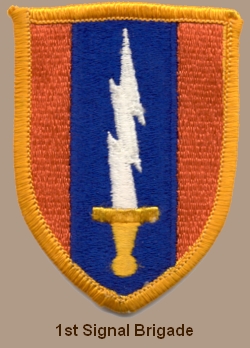 This new command was the first TOE brigade in the Signal
Corps’ history, holding within its arms all of the signal units in Vietnam
except those that were intrinsic and organic to tactical units. As a unit,
the 1st Signal Brigade consolidated all Signal units above the Field Force
level into one command, essentially merging both tactical and strategic
communication functions throughout the entire Vietnam combat area.
This new command was the first TOE brigade in the Signal
Corps’ history, holding within its arms all of the signal units in Vietnam
except those that were intrinsic and organic to tactical units. As a unit,
the 1st Signal Brigade consolidated all Signal units above the Field Force
level into one command, essentially merging both tactical and strategic
communication functions throughout the entire Vietnam combat area.
To make sure that each of the Tactical Zones were
properly managed, the 2nd Signal Group was made subordinate to the 1st
Signal Brigade and given command over Signal operations in the III and IV
Corps Tactical Zones. Offsetting this, the 21st Signal Group was given
authority over Signal operations in the I and II Corps Tactical Zones.
Finally, in early 1967 the 160th Signal Group was added as a commanding
element with responsibilities for Signal operations in the Saigon and Long
Binh areas, with the 29th Signal Group in Thailand also being added to the
1st Signal Brigade, with responsibility for the flow of communication
between the two countries.
By the end of 1967 the United States had committed
nearly 500,000 troops to the Vietnam War. The Army provided about two-thirds
of the total, including seven divisions and two separate brigades. The 1st
Signal Brigade itself was comprised of twenty-one battalions, organized into
five groups. Its strength peaked at 23,000 men in 1968, the majority of
which served in one or another of the roughly 200 key signal sites
spread throughout South Vietnam. Yet while they were posted to Signal Sites,
that didn’t mean they weren’t in the thick of the fighting. Signal Sites,
while strategically located for the purpose of providing communication, were
little more than forward bases stuck in the middle of enemy territory. By
the summer of 1968 enemy attacks on signal positions numbered an average of
eighty per month.
In addition to American forces, Australia, New Zealand,
South Korea and Thailand all contributed units, as of course did South
Vietnam, bringing the total manpower engaged to well over a million. Unlike
the situation during the earlier Korean War, however, the U.S. commander had
no command authority over any of these friendly troops. In researching this
article we attempted to see if a study had ever been done on whether the
American commander’s lack of command authority over the entire complement of
troops available in Vietnam had any impact on the outcome of the war. We
were unable to find any such study… but one wonders what the result would be
today if such had been the case.
Most readers know how the Vietnam War ended, so we won’t
pursue here either how it was conducted nor the interplay of politics in its
ending. If justice is to be done to these topics, space far larger than that
available on this website would be needed. Instead, we will keep our focus
on the Signal Corps.
Looking at just the Signal Corp side of things, as the
war wound down the size of the 1st Signal Brigade decreased in lock step
with the political mandates dictating the rate and type of withdrawal. By
1972 the 1st Signal Brigade’s strength stood at less than 2,500 men. On 7
November 1972 the brigade headquarters left Vietnam and transferred its
colors to Korea. The 39th Signal Battalion, the first Signal unit to arrive
in Vietnam, became the last to leave. Fittingly, as its final wartime
mission the battalion supported the international peacekeeping force that
monitored the troop withdrawal and prisoner exchange. The unit departed
Vietnam on 15 March 1973, almost eleven years to the day after its first
elements had arrived.[10]
By the summer of 1973 the United States had completed
the withdrawal of its combat troops.
Lessons Learned
In terms of lessons learned and changes suffered,
clearly the Signal Corps that fought the Vietnam War was unlike the Signal
Corps that
fought the Korean War, or certainly the war before that. The only thing all
of these had in common was that they all shared the same name. Except for
the most minimalist stating of its mission, everything about it, including
its mission, had changed. As an example, the
Chief Signal Officer had disappeared from the organizational chart and been
replaced by a Chief of Communications-Electronics. While a nice modern title
befitting of a civilian executive, the position held absolutely no
operational responsibilities.
 Later, as war activities increased, this move to strip
the Signal Corps of operational command over its own people and assets
proved to be a disaster. In simple English, the abolition of the Chief
Signal Officer's position (in 1964) left the Signal Corps chain of command
in near total disarray. The lack of coordination that ensued forced General
Westmore-land (in July 1965) to disband the U.S. Army Support Command,
Vietnam, (former-ly the U.S. Army Support Group, Vietnam), and create the
U.S. Army, Vietnam (USARV).
Later, as war activities increased, this move to strip
the Signal Corps of operational command over its own people and assets
proved to be a disaster. In simple English, the abolition of the Chief
Signal Officer's position (in 1964) left the Signal Corps chain of command
in near total disarray. The lack of coordination that ensued forced General
Westmore-land (in July 1965) to disband the U.S. Army Support Command,
Vietnam, (former-ly the U.S. Army Support Group, Vietnam), and create the
U.S. Army, Vietnam (USARV).
USARV’s purpose was to try and undo the damage that had
been done by McNamara and his boys working with Congress to gut the
military, in order to save money. It wasn’t the money part that worried
Westmoreland, it was the lack of command control over the people deciding
the tactics and fighting the war.
Westmoreland, by creating USARV, was able
to once again take under the military’s wing operational control over all
military people in Vietnam (except for the advisers), and their assets. The
reader should note however that while Westy’s little trick helped things in
Vietnam, it did nothing to change how the military worked across the rest of
the world. Even so, from the Signal Corp’s viewpoint, thanks to Westmoreland,
the Signal Officer on the USARV staff was once again able to take
responsibility for and command over the Army's tactical signal operations
and personnel, with long-haul communications coming under the purview of the
Strategic Communications Command.
In addition to fighting to gain control over its own
tactics and people, the Signal Corps had to relearn in Vietnam what it was
like to fight a war that did not conform with what Army planners had thought
the next war would be like when the Korean War ended. Strangely, even though
the use of nuclear weapons was approached and retreated from time and again
in Korea, with nuclear weapons never being used, at the end of the war Army planners
were convinced that in the post-Korean War period the next conflict would be
a nuclear one. This of course meant one would be fighting across a nuclear
battlefield. And this of course meant that the Army needed to be reorganized
yet again, to accommodate what was thought would be highly fluid, front-line
centric, combat conditions in the midst of nuclear fallout.
Accordingly, concepts for combat operations, like the
"Pentomic Division", ROCID, and ROAD were developed and put in place. These
forms of tactics were designed to support a fluid, aggressive, conforming
type of combat. To support this, the Army equipped itself with tech-nology
that matched the tactics. Thus, as the Vietnam War got underway the Army
found itself with equipment like the Davy Crockett rocket, an ingenious bit
of portable armament sporting an atomic warhead—clearly
something useful on the plains outside of Moscow, but totally useless in the
jungles outside of Dalat. Instead, it became clear that since the troops in
Vietnam faced guerrilla warfare in jungles and rice paddies, what was needed
were weapons suitable to this environment, as well as tactics that matched
both the environment and the enemy. In particular, since the enemy proved
slippery, what was needed was a full reorganization to allow the Army to
mount expeditions from fixed bases to both engage and fix the
enemy.
For the Signal Corps this meant quickly developing a
doctrine that supported rapid responses by the combat arms, via the use of
communication equipment that, in the field, was small, lightweight,
portable, and reliable, but back on base was supported by fixed-base
communication via multiple forms of transmission, usually depending on large
antennas and heavy equipment. Flexibility in deployment and mission support
became the first of many lessons that the Signal Corps took from Vietnam.
Adding to this, since a typical divisional signal
battalion in Vietnam ended up covering areas of 3,000 to 5,000 square miles, compared
to the 200 to 300 miles that was expected in a ROAD type of
conventional-cum-nuclear war, Signal units found themselves jostling to come
up with the equipment needed. In this case, the problem was not lack of
funds or poor planning, it was that the TOE allocation a Signal unit had was
based on a design intended to provide for a much smaller footprint
containing far fewer combat troops in need of support. When one looks back
today on Rumsfeld's plan to slim down the Army and make it much more mobile
and responsive to asymmetric warfare, or that of the Obama Administration
today, this problem is the first one that comes to mind. Slimming down the
complement of personnel is one thing, but are you then going to slim down
the amount and type of equipment available too? If so, what will you do when
you find yourself dealing with a 5,000 square mile combat area that, while
it does not need a lot of manpower to keep it operational from a technical
perspective, needs tons of equipment widely dispersed and aggressively
defended by lots of people in order to keep it up and running?
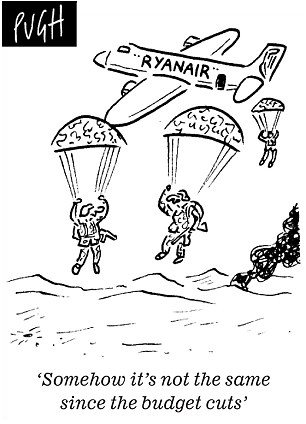 An example of this can be seen in the 518th Signal
Company, a unit this author was assigned to as X.O. towards the end of his
tour of duty in Vietnam. The 518th, a company formed to provide tropo and microwave
communication throughout the entire III and IV Corps Tactical Zones, was
supporting some 14 microwave sites, 4 tropo sites, and a ton of smaller VHF
and UHF sites when I was there. Manpower wise, it grew far beyond the normal
complement of 80–225 odd people that a typical Signal Company might normally
house. At the time of my service the 518th had more than 400 troops assigned
to it.
An example of this can be seen in the 518th Signal
Company, a unit this author was assigned to as X.O. towards the end of his
tour of duty in Vietnam. The 518th, a company formed to provide tropo and microwave
communication throughout the entire III and IV Corps Tactical Zones, was
supporting some 14 microwave sites, 4 tropo sites, and a ton of smaller VHF
and UHF sites when I was there. Manpower wise, it grew far beyond the normal
complement of 80–225 odd people that a typical Signal Company might normally
house. At the time of my service the 518th had more than 400 troops assigned
to it.
Lesson wise then, Vietnam taught the Signal Corps that not only did
it have to be flexible when it came to the type, design, and purpose of the
communication equipment it filled its coffers with, but it also had to learn
how to command a troop complement far larger and more greatly dispersed than
anything encountered in any previous war. In Vietnam, if a Company Commander
wanted to check on the status of his troops, as in the 518th where my men
were spread over an area the size of Connecticut, it involved a lot more
than merely walking out of my Nha Trang office and sauntering through the
barracks or mess hall before heading to the Duy Tan bar for the night.
Instead, it involved up to two months of travel to visit all of the signal
sites. Often times this forced me to allocate less than a day at each,
sitting and talking with no more than a handful of men for an hour or so
until the chopper pilot impatiently signaled me that he had to move on to
his next stop. Surely these men, sitting at a remote signal site
experiencing combat every 3 to 5 days, deserved far more than a visit from
their commander every 6 - 8 months, one that gave them just an hour or
two of face time at that.
That's what happens when Congress takes a dull axe to
the Army's budget, and Pentagon planners then make TOE decisions based not
on the wars that we fight, but the ones the civilian appointee heading the
DOD thinks may happen next. Better to over compensate in terms of types and
quantities of military communication and armament systems than to try and
outfit your military with some constantly changing concept of what the next war will
be like and who it will be against. Strategic planning is an unscientific
science. It doesn't always work. Rumsfeld himself, who was not a bad
Secretary of Defense in his own right, said that the problem with making
decisions based on strategic planning is that the process of strategic
planning is far from an exact science. He said that the very first rule for
strategic planning is to precisely define one's goals. In his
latest book Known and Unknown, A Memoir, he said "Setting clear
goals may sound obvious, but it is remarkable how rarely governments..." do
it. Instead they spend their time thinking of "options or courses of
action."
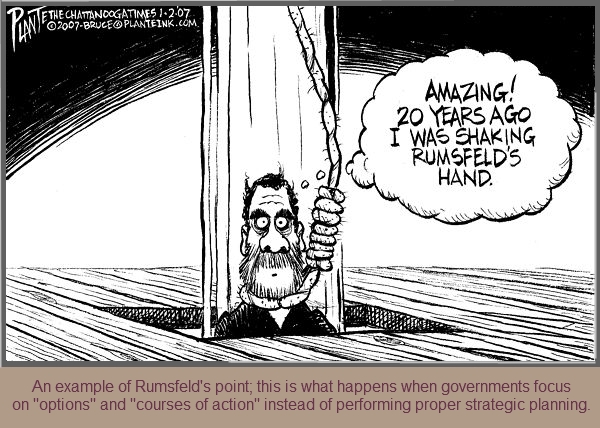 He
goes on say that if you want any chance of success in using strategic
planning as a base from which to make policy decisions, you need to
prioritize your goals. He makes the point that without knowing "which goals
are the most important, one ends up with little more than a wish list...".
Looking at the government's latest plans to cut the military's budget while
at the same time reorienting the military to fight Naval battles with China
and Iran, one has to wonder if this is not the very kind of wish list
thinking that Rumsfeld says comes out of poor strategic planning. After all,
what is the most important goal here? Is it to cut spending in the military,
or win the next war we get into. One could be forgiven for thinking that
these are two mutually exclusive options.
He
goes on say that if you want any chance of success in using strategic
planning as a base from which to make policy decisions, you need to
prioritize your goals. He makes the point that without knowing "which goals
are the most important, one ends up with little more than a wish list...".
Looking at the government's latest plans to cut the military's budget while
at the same time reorienting the military to fight Naval battles with China
and Iran, one has to wonder if this is not the very kind of wish list
thinking that Rumsfeld says comes out of poor strategic planning. After all,
what is the most important goal here? Is it to cut spending in the military,
or win the next war we get into. One could be forgiven for thinking that
these are two mutually exclusive options.
In the end, the Vietnam War proved to be a study in
contrasts, teaching the U.S. government one thing, the military another, and
the Signal Corps still another. As for the enemy, the lessons they learned
have been recorded and taught to every tin
pot dictator and despot ruler
on earth… giving each a way to poke its finger in our
eye at any time they want, without fear of a military defeat. From Iran to
Venezuela, North Korea, Pakistan, Syria, and even Turkey, Lebanon, Jordan
and others, many nations have decided that while America’s military might be
strong, a) its superior firepower can be matched in the field with
rudimentary arms backed by fanatical fighters, b) America’s national debt
and deficit will not allow it to fight long enough to win a prolonged war,
c) our politicians will cut and run at the first sign that our populace has
lost interest in the war, and d) you can count on our populace to lose
interest and cry for an end to any war in, oh, about 2 – 3 years.
As for our own government, especially as regards how it
treats its military, the U.S. government seems not to have learned any of
the important lessons stemming from either WWII, Korea, or Vietnam. In this
author’s view, they continue to make the same mistakes in trying to
micromanage the military as they have in each of these wars, especially once
a war ends, cost cutting battles begin, and Congressmen try to hive off ever
larger pieces of the military’s budget to support bridge construction in
their home district.
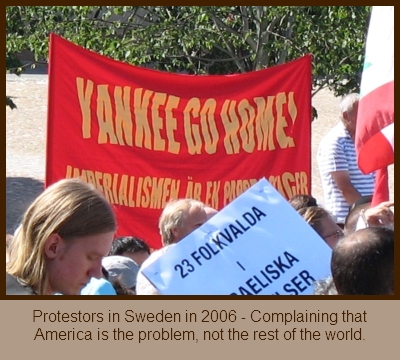 Politically, in relation to how our government addresses
those foreign countries that wish us ill, they seem again not to have
learned much. Compare if you will the current president’s comments in 2008
on Iran with those of Kissinger on Vietnam in 1972. In 2008 President Obama
stated in a speech in Portland, Oregon, that Iran doesn’t “pose a serious
threat to us” because, by his reckoning, “tiny countries” with small defense
budgets can’t do us harm. Kissinger matched this idiocy when in 1972 he
stated on his return from his famous Paris peace talks “peace is at hand.” I
suppose that if you consider having the U.S. Navy taunted by speedboats in
the Strait of Hormuz from a soon to be nuclear power not a serious threat,
or the death of 58,272 American soldiers in a war that our government turned
its back on for a last minute “peace” so that politics could go on as usual
before the next presidential race, then both of these people must be
right.
Politically, in relation to how our government addresses
those foreign countries that wish us ill, they seem again not to have
learned much. Compare if you will the current president’s comments in 2008
on Iran with those of Kissinger on Vietnam in 1972. In 2008 President Obama
stated in a speech in Portland, Oregon, that Iran doesn’t “pose a serious
threat to us” because, by his reckoning, “tiny countries” with small defense
budgets can’t do us harm. Kissinger matched this idiocy when in 1972 he
stated on his return from his famous Paris peace talks “peace is at hand.” I
suppose that if you consider having the U.S. Navy taunted by speedboats in
the Strait of Hormuz from a soon to be nuclear power not a serious threat,
or the death of 58,272 American soldiers in a war that our government turned
its back on for a last minute “peace” so that politics could go on as usual
before the next presidential race, then both of these people must be
right.
For the Signal Corps, there were lessons to be learned
from Vietnam. And for the most part, at least from this distance of
retirement, it appears that the Signal Corps has done its best to learn and
apply these lessons, in spite of the rearguard action it has had to fight all
these years, just to hold its own.
While we have talked of politics and process as areas
of lesson learning, another important lesson learned from Vietnam has to do
with the impact of technology on a modern Army's ability to fight against a
regressive society. Take the issue of the level, type and quality of
communication available to both sides.
In Korea America experienced for the first time the
impact of fighting against an enemy on horseback and mules, communicating
via flags and whistles. Yet strangely, horses and mules aside, the
difference in communication capabilities had little impact on how the war
was fought or its outcome. In Vietnam the same disparity in communication
capabilities existed, but the impact was far greater. Why?
Part of the answer lies in the fact that in Korea it was
a man to man fight, while in Vietnam the fight was via a proxy: the local
villagers. If you are fighting man to man all you have to do is beat the
other guy and the battle is over. If however the fight is really about the
hearts and minds of the local villagers, and the other guy is rallying the
local villagers every night after your pull in your pickets and lock your
front gates, you had better find a way to "communicate" that returns data
not about what the enemy is saying, but what the villagers are thinking. The lesson learned
then is that while the communication available on each side of a battle line
might show a
massive disparity, this doesn't mean that the enemy is at a disadvantage.
All the enemy has to do to make up for any weaknesses it suffers in lack
of technology or communication capacity is to simply change the form of
battle it engages in. Battling via proxy fighters is the quickest and
easiest way to do this, as is fighting a guerilla war. And if one thinks this lesson hasn’t been learned by
North Korea today… or even Iran, then one is sorely mistaken.
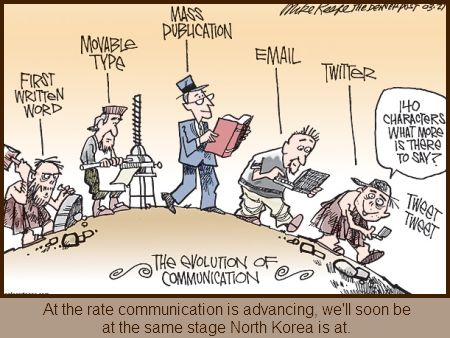 In primitive societies such as those of Vietnam, North
Korea, or Iran, enjoying effective means of secure combat area communication
is virtually unknown. On our side, while we may enjoy the most sophisticated
signaling systems ever seen on the battlefield, their utility is of little
value if they do not support a better means to gather information about the
enemy, his position, intentions, status, and pattern of methodological
behavior, and transfer that information in the form intelligence to the
troops on the ground. Advanced systems such as satellites, tropospheric
scatter, FM radios, and fiber optics are of little value if this goal is not
achieved in its entirety.
In primitive societies such as those of Vietnam, North
Korea, or Iran, enjoying effective means of secure combat area communication
is virtually unknown. On our side, while we may enjoy the most sophisticated
signaling systems ever seen on the battlefield, their utility is of little
value if they do not support a better means to gather information about the
enemy, his position, intentions, status, and pattern of methodological
behavior, and transfer that information in the form intelligence to the
troops on the ground. Advanced systems such as satellites, tropospheric
scatter, FM radios, and fiber optics are of little value if this goal is not
achieved in its entirety.
One of the lessons of Vietnam for the
Signal Corps then should be that it needs to both broaden the number and type of forms
of communication technology available to it, as well as expand its role in
the war game itself, to vet the data gathered and deliver it in the form of
actionable intelligence to the war fighters, in sub-real time responses. One can see the need for this latter point because, strangely, the
need to be able to do these things in ever shortening degrees of real time
activities is in direct proportion to the enemy’s increasingly sparing use
of any form of communication. That is, the more the enemy goes quiet, the
more imperative it is that Signal Corps systems and processes are able to
work at a faster speed. Harking back to the Air Force’s lessons from the
Korean War, one could say that the overwhelming technological superiority
the Signal Corps holds becomes of little value if it cannot close its
OODA
loop faster than the enemy retreats from the use of technology. In other
words, decision making in the 21st century will take place under conditions
of ambiguity and hyper-speed in information: in a word, complexity. The
Signal Corps must adapt its capabilities to support this new form of
communication.
In closing, while as the reader can see from some of the
comments in this article, a modicum of ill feeling and bitterness still
remains in those who fought in Vietnam… at least with regard to how the
Vietnam War was brought to a close. Nevertheless, there is little argument
that the U.S. Army Signal Corps performed its mission admirably. It got the
message through.
As stated
about the Vietnam War
in Getting the Message Through, A Branch
History of the U.S. Army, “in performing their mission, Signal Corps
communicators sustained relatively heavy casualties, especially among
radiotelephone operators accompanying combat operations. Their vital mission
coupled with their high visibility, [and] the telltale antennas protruding
from the radio sets, made them prime targets.” And while no amount of
rationalization can negate the price these boys paid, it must be said that
in support of their efforts their brother signalmen did their damndest to
put in place and deliver efficient and rapid communications, if only to help
reduce the battle fatalities of our fellow signalmen by speeding up the medical evacuation process.
Among the list of Signal Corps Officers we should pause
to think of for their gallantry in Vietnam is Capt. Joseph Maxwell ("Max")
Cleland, who received the Silver Star. Among those Signal Officers assigned
to closely held signal companies embedded within the Infantry and other
units, several soldiers serving as communicators earned recognition. One of
them, “Capt. Euripides Rubio, Jr., communications officer for the 1st
Battalion, 28th Infantry, posthumously won the award for his gallantry
during Operation ATTLEBORO in Tay Ninh Province in November 1966. During an
attack on 8 November, Rubio left the relative safety of his position to help
distribute ammunition and aid the wounded. When the commander of a rifle
company had to be evacuated, Rubio, already wounded himself, took over.
Continuing to risk his life to protect his troops, he was eventually felled
by hostile gunfire after tossing a misdirected smoke grenade into enemy
lines.”
- - -
With Vietnam behind it, the Signal Corps moved on. In
the troubling times that followed Vietnam, the Signal Corps underwent yet
another significant transformation. This time however the change was due,
with most of the changes being made in great measure because of the lessons learned
from both Korea and Vietnam. Among the changes that took place are these:
– When Congress discontinued the draft in 1972, ushering
in an all-volunteer organization, it was only natural that the Signal Corps
would use the best of this concept to its advantage. As part of reorganizing
to embrace the new Army, women were given an expanded role in the Signal
Corps, with more career opportunities being made available to them. By 1976
over 7,000 enlisted women were distributed among all but a few of the then
sixty-one communication MOS specialties.
– The ever present budget tightening forced the
post-Vietnam Army to adopt a rationalized force structure based on sixteen
Regular Army divisions, which were said to be strong enough to defend U.S.
interests in Europe but lean enough to reduce the strain on the taxpayers’
pocketbooks. Fortunately, this idea never had to be tested. Equally
fortunately, under the new “Total Army” concept, the Army Reserve and
National Guard were made available to assume a greater role in the nation's
defense, thus helping to round out under-strength units.
– 1973 saw the Army place its branch schools under the
newly created Training and Doctrine Command (TRADOC). The next year the
Signal Corps, fearing it might lose control over the excellent training
schools it had spent decades building, began consolidating its own signal
training at Fort Gordon, Georgia. So quickly did this effort move forward
that by the summer of 1974 the Southeastern Signal School was re-designated
as the U.S. Army Signal School, while the signal school at Fort Monmouth
became the U.S. Army Communications–Electronics School. Shortly thereafter,
on 1 October 1974, Fort Gordon became the U.S. Army Signal Center, with the
fort being re-designated as the new “home of the Signal Corps.”
– During the same period the Strategic Communications
Command (now located at Fort Huachuca) dropped the word strategic from its
name and became simply the U.S. Army Communications Command (ACC). It was
thought that the new title better described the broad range of mission
objectives the command had, from providing communications within Army posts,
camps, and stations to signaling around the world via satellites.
– In various forms Army planners undertook a number of
revisions to tactical doctrines over the intervening years, hoping to
encapsulate combat lessons from Vietnam with others learned from studying
conflicts such as the Arab-Israeli war in 1973. For the most part, the new
concepts that were rewritten as doctrines failed, with one in particular
crashing and burning within 5 years of its publication. This one, summed up
in the then new Field Manual 100-5, Operations, was tossed aside in 1982
after being continually and consistently ridiculed for being based on a
“victory in the first battle is imperative” solution to each and every war
to come.
– On the negative side, because of the heavy
commitment the military made to advanced high-tech items such as the M1
tank, the Patriot air defense missile, the Bradley fighting vehicle, and the
Apache attack helicopter “doctrine creep” began to set in. With a never
ending need to justify the existence (and purchase) of more and more of
these systems, combat doctrine found itself being rewritten to depend on
these weapons systems. In simple English, doctrine development became driven
by the systems selected for development years earlier… towards the end of
the Vietnam War. In this regard, a lesson that could and should have been
learned from Vietnam and Korea was not. Fortunately, the Soviet Union
imploded before America’s equipment driven approach to combat doctrine
development could be tested.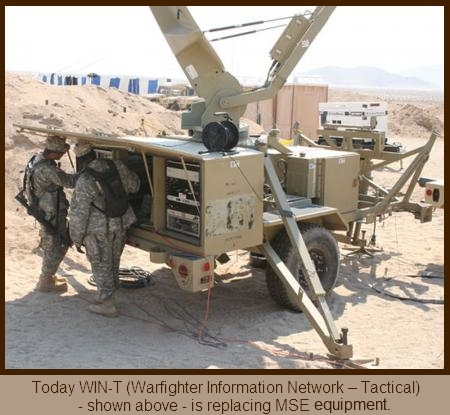
– On the positive side again, the Signal Corps kept its focus throughout
these years, working diligently to bring military communication firmly into
the twenty-first century. In part it did this by working with its sister
services to develop fully interoperable telecommunications
systems managed under the auspice of the Joint Tactical Communications
Program (TRI-TAC). During the same period, the Signal Corps promoted to the
Army a new tactical communications architecture known as Mobile Subscriber
Equipment, or MSE. Wondrously, to save time and money in implementing MSE,
the Signal Corps took a page from its old Page and Philco days of Vietnam by
endorsing the specs of a system that had already been developed for civilian
use by GTE, rather than design a new one. Further, this time the Signal
Corps served only to distribute the equipment and provide service support
for it, leaving it up to the user to both cover its costs within its own
budget, as well as operated the system.
If one stops and thinks for a minute, one can
see in this approach the beginnings of how the Signal Corps will move
forward in the 21st Century. Simply put, if one wants to specify a strategic
plan of evolution for the Signal Corps, this is probably it.
– To extend even better communication to the
battlefield, especially at battalion level and below, the Signal Corps
introduced new VHF-FM combat net radios. Known as the Single Channel Ground
and Airborne Radio System (SINCGARS), it replaced the VRC-12 family of
radios developed during the late 1950s. Designed as a family of radios,
units were made available in man-packable, vehicular, and airborne versions.
Of equal importance, SINCGARS was designed to be smaller, lighter, and able to
provide more channels than its predecessor.
– Working to support its sister arms, the Signal Corps
developed new data systems as part of an effort to modernize the
capabilities of the Joint Tactical Information Distribution System (JTIDS)
of the Air Defense Artillery section. The solutions implemented provided
better missile fire control via an Enhanced Position Location Reporting
System (EPLRS) that used radios to provide real-time position location,
identification, and navigational information on the battlefield. Together
the JTIDS and EPLRS were renamed the Army Data Distribution System (ADDS).
– In 1981 Army Chief of Staff General Edward C. Meyer
approved the implementation of the United States Army Regimental System
(USARS) to improve unit cohesion and esprit. An act that clearly resulted
from the lessons of Vietnam where men rarely stayed in one unit long enough
to develop binding feelings for it, under this new approach soldiers were
assigned to regiments and, as originally conceived, would remain affiliated
with them throughout their military careers. Within the Signal Corps and
other combat support/combat service support branches, where a large portion
of the soldiers served in units outside their assigned branch, the system
was implemented on a "whole branch" basis. In other words, the entire Signal
Corps was considered to be the Signal Corps regiment, and any soldier with a
Signal MOS was automatically affiliated with the regiment upon graduation
from the branch school. On 1 June 1986 the Signal Corps regiment was
established as a component of the USARS with Fort Gordon as the regimental
home base. Accordingly, on 3 June 1986 the commander/commandant of the
Signal Center and Fort Gordon also became known as the Chief of Signal. Maj.
Gen. Thurman D. Rodgers became the first to carry the new title.
More changes have followed these few listed above even
until today, from the introduction of the Tactical Fire Direction System
(TACFIRE), to fiber optics based electromagnetic pulse (EMP) reduction
systems, to the assumption by the Signal Corps of the responsibility to
develop, introduce, and manage a new paperless records management system
for the Army as a whole. These and other efforts were, for the most part,
rolled out as part of a doctrine that revolved around creation of an
Information Mission Area (IMA). And while this concept has taken its hits
and been repeatedly revised, it nevertheless has proven the case that as a
result of the needs developed during the Vietnam War, the Signal Corps has
adapted itself to be able to constantly move to meet and overcome the new
challenges ever evolving modern warfare presents.
Firmly understanding that it must meet two
simultaneous missions: that of a war fighter and that of the provider of any
and all manner of communication and data systems and management, there is
little doubt that the Signal Corps will continue to adapt to changing
conditions in the information management environment. With a task of meeting
the military’s needs for knowledge, information, and intelligence about the
enemy, his position, intentions, status, and pattern of methodological
behavior, the Signal Corps will continue to be an indispensible part of
America’s Army.


The first two articles in this series
are available here:
Go to Part I: The Signal Corps During The
Cold War 
Go to Part II: The Signal Corps During The Korean
War


Footnotes:
[1] In business a
knowledge worker
is someone who is empowered, because of their access to
real time, detailed information about an event,
to make policy changing decisions as to how a company
should respond to the event. They key element in this definition being
access to real time, detailed information as an enabling force to empower an
employee to make a decision that would either form new company policy
regarding the issue in question, or go against company policy completely. In
a combat environment, a knowledge worker would thus be someone who, again
because of their knowledge of real time, detailed information of the event
in progress, makes real time leadership and tactical decisions based on that
information. The Signal Corps, in making available the delivery of such
information to field combat personnel through its fully integrated
communication networks, enables the empowerment of soldiers to act as
knowledge workers, rather than simply forcing them to follow orders that,
while they may have been proper for the occasion when first issued, are no
longer relevant because of changes to the circumstances on the ground. The
purpose of a knowledge worker's existence then is to gain real time access
to the information needed (both audio, visual, and data) such that they are
able to make a decision as to how an event should be addressed, while that
event is in progress and in real time contact with the knowledge worker.– To return to your place in the text, click here:

[2] The "Powell
Doctrine" is a journalist-created term that begins with a long list of
questions that should be answered before war is begun, and ends by asserting
that when a “nation is engaging in war, every resource and tool should be
used to achieve decisive force against the enemy, minimizing US casualties
and ending the conflict quickly by forcing the weaker force to capitulate.” – To return to your place in the text, click here:

[3] Re. the purpose of government: Known as the “social contract”,
governments exist i) to protect the rights of the individual citizen, and
ii) to preserve the property and homeland of those citizens. See for
example: John Locke’s (1632-1704) Treatise on Government. Ibidem Bertrand
Russell, A History of Western Philosophy, A Touchstone Edition by Simon &
Schuster, May 2007, page 629. Reducing a nation’s ability to wage the kind
and number of wars needed to protect its people flies in the face of the
purpose of its existence in the first place.
–
To return to your place in the text, click here:

[4] In
2003 Secretary of Defense Donald Rumsfeld, supported by General Pete
Schoomaker, laid out a new program that, while long on explanation as to how
it would streamline the military to be better able to fight asymmetric wars,
was by many people’s reckoning little more than a disguised attempt to save
money by cuts in the Army. The program set in motion a plan to convert the
Army from a force of 10 active Divisions (of 15-20 thousand troops each)
into a force of 40 Brigade Combat Teams (of 3 - 5 thousand troops each).
Additional Combat Brigades would be set up in the National Guard via similar
measures. In essence, the intent was to move from a Division centric
deployment approach to one based on Brigades. The approach put in place has
had mixed results. For example, some credit it with the ability to support
sustained deployment of ground forces in Afghanistan, while others say that
the same could have been just as easily accomplished within the old
structure. As to its effectiveness in asymmetric warfare, that may never be
known, as the 2011 changes proposed by President Obama will change the
military yet again. This time moving towards a structure "optimized" for
fighting naval engagements against countries like Iran and China. –
To return to your place in the text, click here:

[5] The
problem that Eisenhower created was compounded in 1961 when President John
F. Kennedy and his secretary of defense, Robert S. McNamara, decided to
“reorganize and strengthen” the armed forces to allow for a more flexible
response to international crises. At that time McNamara initiated
far-reaching managerial changes within the Defense Department, shifting
power from the military services to the civilian bureaucracy. In terms of
when the trend towards civilian management of military operations and assets
began, and who was responsible for it, the answer is a) 1961, and b) Robert
S. McNamara. Effectively, McNamara directed a gutting of the Army Staff, at
its highest level. In support of this, on 16 January 1962 President Kennedy
submitted a plan to Congress that abolished the technical services, with the
exception of the Medical Department. Congress raised no objections, and the
reorganization became effective on 17 February. In the process the positions
of Chief Chemical Officer, Chief of Ordnance, and Quartermaster General were
done away with. The positions of Chief Signal Officer (who would now report
to the deputy chief of staff for military operations [DCSOPS]) and Chief of
Transportation were allowed to continue to exist, albeit as special staff
officers rather than as Chiefs of Services. The Chief of Engineers lost his
military responsibilities, but was kindly allowed to retain his civil
functions. In one fell swoop, by eliminating the technical services as
independent agencies, McNamara effectively handed over military technical
asset design and development, implementation, operations and management to
the civilian industrial sector.
–
To return to your place in the text, click here:

[6] Almost as
soon as the announcement was made by Japan on August 15, 1945, that it was
tossing in the towel (VJ Day), the U.S. dispatched a twelve-man team to
Hanoi to arrange for the release of American prisoners. That team included
four Signal Corps men, including two Signal Officers. These four established
the first non-clandestine American communications station in Vietnam. The
communication equipment was set up at the Hotel Metropole in Hanoi. From
that point until the end of the Vietnam War, in one way or another, the
Signal Corps maintained both people and active communication links from
Vietnam back to the U.S. –
To return to your place in the text, click here:

[7] The Pacific
Scatter System used tropospheric scatter and ionospheric scatter signal
propagation. At inception the system was limited to two voice channels, one
of which could be multiplexed into sixteen teletype circuits.
–
To return to your place in the text, click here:

[8] So under staffed was the
Signal Corps that by 1967 it was contracting with Page to build steel drum
revetments around the signal buildings on the signal sites that dotted the
country. Source: United States Army in Vietnam; Military Communications A
Test for Technology, John D. Bergen, page 334.
–
To return to your place in the text, click here:

[9] To be fair, much of the problem with signal fading
came about not because of poor design by Page and Philco, but because of a
combination of solar flares and temperature inversion problems. What
actually transpired was that when Page and Philco proved unable to determine
why they were losing signal strength, a group of experts from the Defense
Communication Agency (DCA), headed by the Signal Corps, was brought in to
analyze the problem. They determined that rarely, but on occasion, solar
flares affected the tropo hops, while more frequently the problem happened
because of the formation of local temperature inversions, a phenomenon that
occurs when the upper layers of the atmosphere are uncharacteristically
warmer than the lower layers. – To return to your place in the text, click here:

[10] During its long tour of duty the 39th had
participated in all 17 campaigns and earned 5 Meritorious Unit
Commendations. – To return to your place in the text, click here:

References:
Sources used in the writing of this article
include:
United States Army in
Vietnam; Military Communications A Test for Technology; by John D.
Bergen
1951 - 1963: From Rice Paddy to STARCOM Station,
Early American Strategic Communications In Vietnam; Josef W. Rokus
Getting the Message Through; A Branch History of the
U.S. Army Signal Corps; Rebecca Robbins Raines
Johnathan M. House, Toward Combined Arms Warfare: A
Survey of 20th-Century Tactics, Doctrine, and Organization; 1984.
United States Army Combat Studies Institute. US Army Command and General
Staff College. Fort Leavenworth, Kansas. p. 155.
Michelle Malkin, Barack Obama: Gaffe
machine; May 21, 2008;
http://michellemalkin.com/2008/05/21/barack-obama-gaffe-machine/
"TRI-TAC and You!," Army
Communicator 1 (Spring 1976)
"Commander's Comments,"
Army Communicator 14 (Fall 1989), Annual Historical Review,
Headquarters, U.S. Army Signal Center and Fort Gordon, Georgia, in re. how
Information Systems Command became the proponent for the Army's data
processing units, formerly Adjutant General Corps assets.
Nancy S. Dumas, "Fielding SINCGARS," Army
Communicator 13 (Winter 1988).
The Journal of Military Electronics and Computing;
Tech Refresh Strategies Bolster New Battlefield Compute Workloads;
August 2011.

